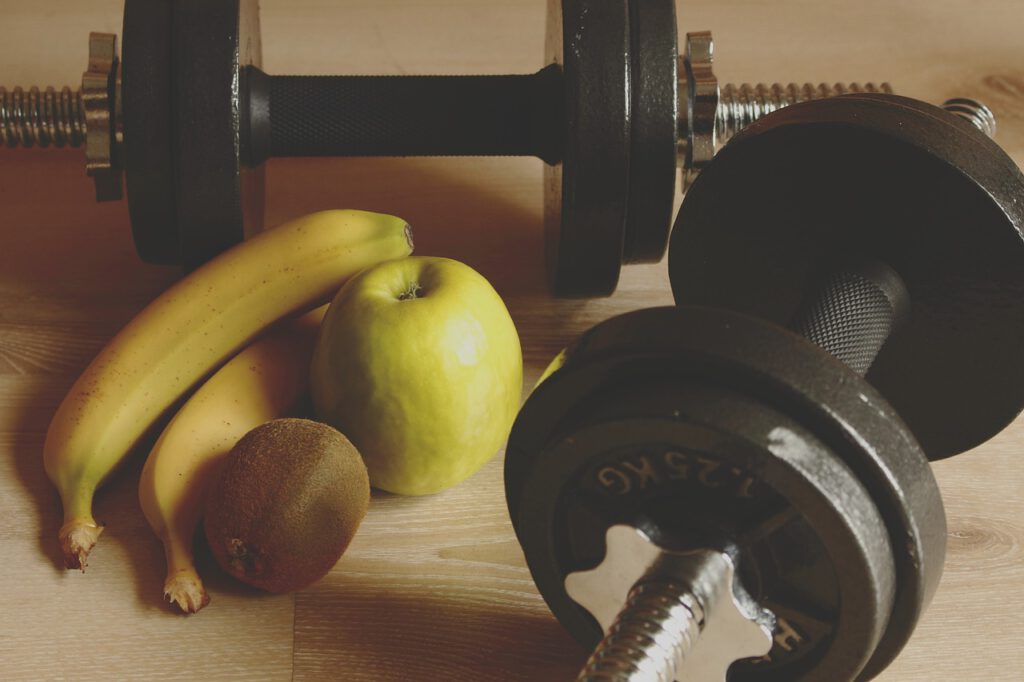
Gynecomastia, the enlargement of male breasts, is an increasingly common condition. According to a survey conducted by the American Society of Plastic Surgeons, over 30% of men in the United States have experienced some degree of gynecomastia. This article will explore the causes of this condition and how it can be treated.
The underlying cause of gynecomastia is not always clear, but it can be attributed to a variety of factors. These include hormonal imbalances, medical conditions such as liver disease or kidney failure, certain medications, and excessive alcohol consumption. Additionally, it may be caused by changes in body fat distribution that occur during puberty or adulthood.
While there are many potential causes for gynecomastia, understanding these potential factors can help to diagnose and treat the condition more effectively. In this article we will discuss in detail the causes of gynecomastia and how they can be addressed with medical interventions or lifestyle changes.
1. What Is Gynecomastia?
Gynecomastia is a gnawing problem that grips many men. Glands galore, this gynecomastia growth can go from grave to great in size. Genuinely ghoulish, this gynecomastia can cause great grief and give guys grief when it grows. So what is gynecomastia? Well, simply put, it’s an abnormal enlargement of the male breast tissue that’s caused by an imbalance between the hormones testosterone and estrogen. This condition can range from mild to severe, depending on its severity.
Though often found in newborns or adolescent males, gynecomastia can affect men of all ages. It may be present in one or both breasts and can affect their physical appearance as well as mental health. Symptoms of the condition include tenderness or swelling in the breast area, pain or discomfort around the nipples, excess fatty tissue in the chest area, and enlarged areolas.
Treating gynecomastia depends on its severity and underlying cause. In some cases lifestyle changes such as diet and exercise may help reduce symptoms while others require medical interventions such as medications or surgery. With proper diagnosis and treatment plans tailored to each individual case, it’s possible to reduce gynecomastia symptoms so that men can live a more comfortable life with improved self-esteem and body confidence.
The next section will explore common causes of gynecomastia in greater detail.
2. Common Causes Of Gynecomastia
To dive deeper into the world of gynecomastia, let’s take a look at the common causes behind it. It’s like trying to find out why robins fly south for the winter: there are many variables in play.
First and foremost, we should understand that hormones play a major role in this condition. As the saying goes, ‘hormones are like an orchestra’ – each one is part of a larger balance that can be thrown out of tune if too much or too little of any one hormone is present. This can result in an overabundance of estrogen and testosterone which then leads to gynecomastia in men.
In addition, lifestyle choices such as obesity, excessive alcohol consumption, drug use (both recreational and prescribed medications), certain medical conditions, and aging can all contribute to gynecomastia. Unfortunately, these factors can be difficult to control due to their inherent nature or because they involve changing habits that have been ingrained for years.
It’s clear that there are multiple causes behind gynecomastia; it’s not simply the result of one factor alone. With this in mind, let’s now turn our attention to exploring the role these hormones play in causing this condition.
3. The Role Of Hormones
It is estimated that between 60 to 90 percent of adult males have some form of gynecomastia. Understanding the role of hormones in this condition can be an important factor in diagnosing and treating it.
Hormones like testosterone, progesterone, and estrogen all play a role in the development of this problem. Testosterone is the primary hormone responsible for male characteristics and development, while progesterone and estrogen are primarily associated with female characteristics and development. When there is an imbalance or a deficiency of these hormones in men, they experience symptoms such as enlarged breasts or gynecomastia.
Gynecomastia can occur due to a variety of factors such as age, drugs, tumors or liver problems that affect hormonal balance. Hormonal imbalance can cause increased levels of estrogen which leads to the enlargement of breast tissue in males. Treatment for gynecomastia may include medications to help restore hormonal balance or surgery to remove excess fat and glandular tissue from the breasts.
These treatments are often successful in reducing or eliminating symptoms, but it is important to also address any underlying causes that may be contributing to the condition such as medications that can cause gynecomastia.
4. Medications That Can Cause Gynecomastia
Medications can be a cause of gynecomastia, just as hormones can. They’re not the only cause, but they can play a role in the condition’s development. It’s important to understand what medications may contribute to this issue so that you can make an informed decision about your health.
First and foremost, certain types of medications used to treat prostate enlargement or cancer can lead to hormone imbalances that result in gynecomastia. These include drugs like finasteride or dutasteride, which are used for benign prostatic hyperplasia (BPH) or prostate cancer. Additionally, spironolactone is used in both genders to reduce water retention and treat high blood pressure caused by BPH. However, it has been known to cause hormone imbalances that lead to gynecomastia.
Additionally, some antipsychotic medications such as risperidone have been linked to increased levels of prolactin in the body, leading to gynecomastia. Lastly, some HIV medications like efavirenz may also contribute towards the development of gynecomastia due to their effects on hormones.
Therefore, it’s important for anyone taking these medications – either now or in the past – to be aware that they could potentially be contributing factors towards gynecomastia and should be discussed with their doctor if they are experiencing any symptoms associated with the condition. With this knowledge at hand, we can move onto exploring herbal supplements and their potential impact on gynecomastia risk.
5. Herbal Supplements And Gynecomastia
Herbal supplements, such as those found in health food stores, can also play a role in the development of gynecomastia. Many of these natural remedies contain hormones that can have an effect on the body’s endocrine system, leading to an imbalance in testosterone and estrogen levels. For example, saw palmetto is known to inhibit the enzyme 5-alpha reductase, which helps convert testosterone into dihydrotestosterone. This could potentially lead to too much estrogen and low testosterone levels in men, resulting in gynecomastia.
In addition to hormonal imbalances caused by herbal supplements, some natural products may also contain substances that act like estrogens when ingested. These substances are called phytoestrogens and can cause gynecomastia if taken regularly over a long period of time. Examples of plants or herbs containing phytoestrogens include soybeans, alfalfa sprouts, black cohosh root extract, licorice root extract, and fennel seed extract.
However, it’s important to point out that not all natural remedies will lead to gynecomastia — some may even help reduce it when used properly under the guidance of a qualified healthcare professional. TIP: Always consult with your doctor before taking any herbal supplement or other natural remedy for gynecomastia symptoms. That way you can be sure you’re getting the most effective treatment for your condition without risking any adverse effects from unproven remedies.
6. Illicit Drugs And Gynecomastia
Certain illicit drugs can also cause gynecomastia. Some of these include anabolic steroids, marijuana, and heroin. Anabolic steroids are synthetic substances that act like testosterone, which can cause hormone imbalances in the body. When taken in large amounts, they can lead to the development of gynecomastia.
Marijuana use has been linked to gynecomastia in some studies as well. It is thought that the endocannabinoid system may be involved in the regulation of hormones such as testosterone and estrogen, and when disrupted by marijuana use, it can lead to an increase in estrogen levels – leading to gynecomastia.
Heroin use has been associated with gynecomastia as well due to its ability to disrupt hormones in the body. Heroin can also interfere with liver function, which can further reduce testosterone levels and disrupt hormone balance. This disruption may lead to the development of gynecomastia.
Alcohol consumption has also been linked to increased risk of gynecomastia. It is believed that excessive drinking can lead to reduced testosterone levels and increased estrogen levels, resulting in an imbalance that could lead to the development of breast tissue in men.
7. Alcohol Consumption And Gynecomastia
Alcohol consumption and gynecomastia are like two sides of a coin: they can be linked, but not necessarily in the same way. While the occasional tipple won’t do any harm, excessive drinking can lead to a number of health problems, including gynecomastia. Here are four ways in which alcohol could contribute to this condition:
Firstly, heavy drinking can cause a hormone imbalance in men that affects their testosterone levels. When testosterone is low, it can cause an increase in estrogen levels and subsequently lead to breast enlargement.
Secondly, alcohol can act as a diuretic and cause fluid retention in the body. This may result in swollen breasts, which is a symptom of gynecomastia.
Thirdly, excessive alcohol consumption could lead to liver cirrhosis or other liver diseases. A damaged liver isn’t able to produce hormones effectively, leading to an increase of estrogen levels that could cause gynecomastia.
Lastly, binge drinking or regular heavy drinking has been known to deplete important vitamins and minerals from the body. Vitamin B6 is essential for healthy testosterone production; its deficiency could lead to an imbalance between estrogen and testosterone levels and therefore contribute to gynecomastia development.
These are only some of the ways in which alcohol consumption might be linked with gynecomastia; there are many other factors that may also play a role too.
8. Other Factors That May Contribute To Gynecomastia
In addition to the above-mentioned causes of gynecomastia, there are some other possible contributors. It’s important to note that many of these are difficult to confirm and may not be directly connected with the condition. For example, certain medications can result in an increase in breast tissue size, including some antidepressants, antibiotics, and heart medications. Hormone therapy or treatments for prostate cancer can also cause gynecomastia due to a disruption in hormone balance.
Also, certain health conditions might be associated with gynecomastia. These include kidney failure, cirrhosis, hyperthyroidism, and tumors in the testicles or adrenal glands. While these conditions may be linked to gynecomastia, it is worth noting that further research is required to confirm any direct connection between them and the condition.
Certain lifestyle factors might also play a role in contributing to gynecomastia. These include malnutrition, aging, as well as physical trauma from surgery or radiation therapy. Additionally, some recreational drugs such as marijuana have been linked to increased production of breast tissue.
These potential underlying causes demonstrate how complex and varied gynecomastia can be. Further research is needed to better understand all its possible causes so that effective treatments can be developed for those affected by this condition. Moving forward now into the next section about gynecomastia in infants…
9. Gynecomastia In Infants
Gynaecomastia is a condition that affects more than just adults; it can also affect infants. But what causes gynecomastia in babies? How do parents identify and address it?
The truth is, there are many potential causes of gynecomastia in infants. From hormones to medications, there could be dozens of different factors at play. Ultimately, the only way to determine what’s causing the problem is to consult a doctor.
It’s important to remember that most cases of gynecomastia in babies are temporary, so they should not cause undue alarm or distress. Rather, parents should look into potential treatment options so their infant can get the best care possible.
10. Potential Treatment Options
Like a dark cloud looming on the horizon, gynecomastia can be a distressing condition for both men and boys. But, just like clouds eventually dissipate, there are potential treatment options for those affected by the condition.
The first step towards finding relief is to understand that gynecomastia is treatable. Luckily, there are many paths to consider:
- Medication – Hormone therapy or medications can help reduce breast size in some cases.
- Surgery – In more severe cases, surgery may be necessary to remove excess fat or glandular tissue from the breasts.
- Lifestyle Changes – Exercising regularly, avoiding drugs and alcohol, and maintaining a healthy diet could also help reduce symptoms of gynecomastia over time.
- Alternatives – Herbal supplements, massage techniques, and other alternative treatments may also be effective in reducing symptoms of gynecomastia.
No matter which treatment option you choose, it’s important to speak with your doctor about any questions or concerns you might have before embarking on any sort of treatment path. With the right plan in place and an understanding of the available options, gynecomastia can become something that no longer impedes on life’s activities or causes distress each day—allowing patients to finally feel like themselves again!
Frequently Asked Questions
Can Gynecomastia Be Prevented?
Have you ever wondered if gynecomastia can be prevented? It’s a common question many people have asked. A condition that affects the size of male breast tissue, it’s understandable why so many want to know what they can do to reduce their risk.
Interestingly, there are several steps you can take to lower your chances of getting gynecomastia. Eating a balanced diet is key as this helps reduce body fat levels. Exercising regularly and avoiding drugs or alcohol may also help – these substances can lead to an increase in hormones that promote breast tissue growth.
It is also important to speak to your doctor if you have any concerns about gynecomastia. Your doctor will be able to provide further advice on lifestyle changes or treatments that may help prevent the development of the condition.
TIP: Regular self-exams are a good way of keeping track of any changes in your breasts so that you can catch any signs of gynecomastia early on and take action as soon as possible.
What Is The Difference Between Gynecomastia And Pseudo gynecomastia?
Gynecomastia and pseudo gynecomastia are two conditions commonly mistaken for each other, but they have distinct differences. Gynecomastia is a condition that affects men in which the breasts become enlarged due to an imbalance of hormones, while pseudo gynecomastia is caused by excessive fat accumulation in the chest area.
Understanding the differences between these two conditions can be important in knowing how to prevent or treat them. For example, gynecomastia is often caused by an underlying hormonal issue, so it’s important to be aware of any changes in hormone levels. In contrast, pseudogynecomastia is most often caused by lifestyle factors like diet and exercise habits, so making positive changes in those areas may help reduce symptoms.
Treating either condition may involve a variety of methods such as medication, surgery or lifestyle modifications. It’s important to talk to your doctor about what treatment plan is best for you based on the type of gynecomastia or pseudogynecomastia you have. With the right diagnosis and treatment plan, you can address this condition and get back to living your life without discomfort or embarrassment.
How Long Can Gynecomastia Last?
Gynecomastia can be likened to a rollercoaster – it’s an unpredictable ride filled with ups and downs. But one thing that is certain, is that many men want to know how long it will last. The truth is, gynecomastia can last anywhere from months to years – it all depends on the individual’s body type, age and the underlying cause of the condition.
There are several common causes of gynecomastia including hormone imbalances, certain medications, changes in diet or lifestyle, and even genetics. In some cases, the condition may resolve itself within a few months with no additional treatment needed. However, if the underlying cause is not addressed, then it may persist for much longer.
It’s important to note that all treatments for gynecomastia should be discussed with a healthcare provider before being undertaken as results vary from person to person and each case needs to be taken on its own merits. Ultimately, whether or not gynecomastia lasts for days or years depends largely on what has caused it in the first place.
What Is The Success Rate Of Gynecomastia Treatment?
Gynecomastia can be a source of embarrassment and discomfort for many men, leaving them feeling helpless in their struggles. But with the right treatment, it’s possible to increase the success rate of managing this condition.
Like most medical treatments, the success rate of gynecomastia treatment depends on multiple factors such as the patient’s age, physical health, and lifestyle. But one thing that all men with this condition have in common is hope – hope that they can find relief from their symptoms and reduce their risk of developing further complications.
The good news is there are a variety of treatments available that can help improve the odds of successful gynecomastia management. These range from minimally invasive procedures like liposuction, to hormone therapy and medications. All these methods have shown varying degrees of success in treating this condition, so it’s important to consult with your doctor about which option is best for you and your lifestyle. With proper treatment and care, many men have been able to reclaim their confidence and live life without worrying about chest size or shape issues.
Are There Any Lifestyle Changes I Can Make To Reduce My Risk Of Gynecomastia?
Once upon a time, there was a young man who noticed an unusual growth in his chest area. He was scared and he wanted to know how to reduce the risk of it happening again.
He went on a journey to find out what he could do to prevent this from happening again. Along the way, he discovered four essential steps that he could take:
- Exercise regularly – Regular physical activity helps keep your hormones in balance, thus reducing the chances of gynecomastia occurring.
- Avoid drugs – Recreational drugs like marijuana and steroids can disrupt your hormone levels, leading to gynecomastia.
- Eat healthy food – Eating a diet rich in fruits and vegetables can help keep your hormones balanced too.
- Maintain a healthy weight – Being overweight or obese increases your risk of developing gynecomastia because fat cells contain aromatase, an enzyme that converts testosterone into estrogen (the female hormone).
These are just some of the things you can do to reduce the risk of gynecomastia occurring. Taking these steps will not only help reduce your chances of developing this condition but also improve your overall wellbeing and quality of life. So start taking action today!
Conclusion
Gynecomastia is a relatively common medical condition that can be treated with lifestyle changes or medical interventions. Despite its prevalence, many people are unaware of the causes and treatments for gynecomastia. In this article, we explored the various causes of gynecomastia, discussed how to prevent it, compared it to pseudo gynecomastia, and looked at treatment options and success rates.
It is estimated that between 30-60% of adult men may suffer from gynecomastia at some point in their lives. This statistic highlights the importance of understanding what gynecomastia is and how best to treat it. Adopting healthy lifestyle habits such as exercising regularly, balancing your diet, avoiding drugs and alcohol abuse and reducing stress can go a long way in helping reduce your risk for developing gynecomastia.
If you think you may have gynecomastia, it’s important to speak with your doctor about possible treatments or lifestyle changes that could help reduce the symptoms. With proper care and monitoring, most cases of gynecomastia can be treated successfully. Ultimately, understanding the causes of gynecomastia can help you better manage the condition if you ever find yourself dealing with it.
Check out some of the best Gynecomastia supplements



